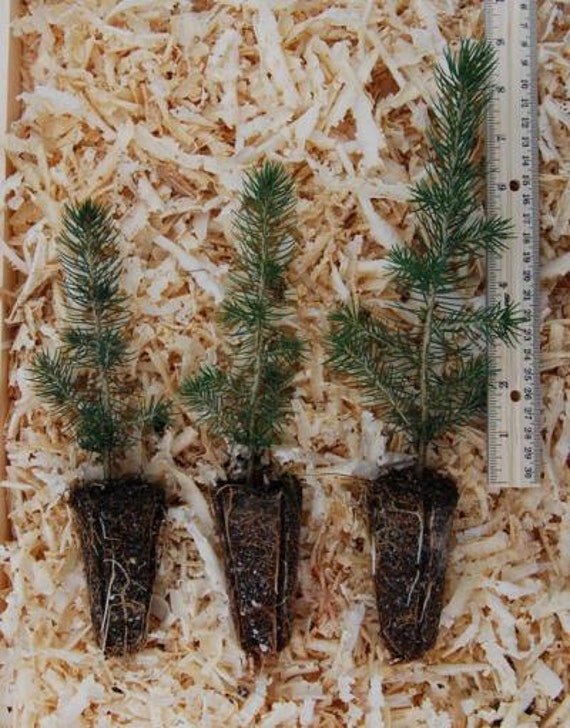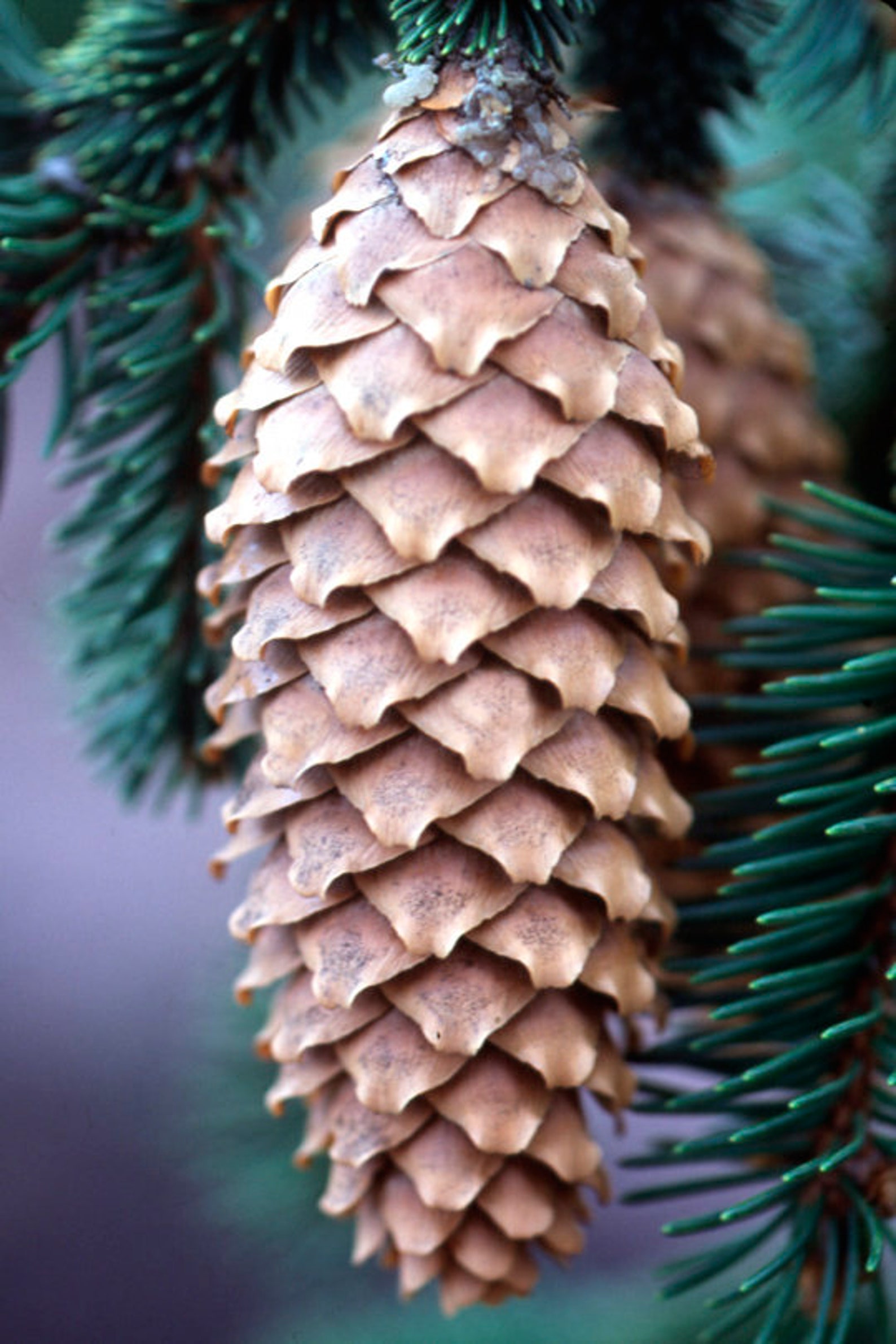


This gesture is why the trees in Trafalgar Square and other major cities are almost always Norway Spruce Trees. Olso sends Huge Norway Spruce Trees to London, Washington DC, and other cities of the two nations that came to Norway's aid in WWII. Norway Spruce Trees are a very popular choice for Christmas trees, and this has roots in a tradition from Oslo, Norway. The way these cones hang from the branches is reminiscent of Christmas ornaments. Then, after fertilization, the cones turn from a purple-green to a brown color and turn down to hang from the opposite side of the branch. They start out from pinkish-red flowers that sit upright on branches. The cones are elongated and more narrow than others, spanning between 6 and 9 inches long. Norway Spruce cones are the longest cones of the spruce family, which is one of the ways you can distinguish this from other spruce trees. While the tree trunk itself is closer to 150 years, it is a clonal tree: its root system continuously grows new trunks over the years. The oldest Norway Spruce is actually considered the oldest known living tree to date - Old Tjikko is a Norway Spruce growing from a root system that is over 9,550 years old. In its native Norway, Picea abies have been seen growing over 150 feet tall and living well over five hundred years. A dual row in this manner will fill in the gaps much faster, ideal for privacy. If you are planting two staggered rows, we recommend planting each tree at least 20 feet away from each other and from alternating rows. You can plant them as close as 16 feet apart for a dense wall, or 25 feet apart in order to see the pyramidal shape of each tree with more definition.

#Norway spruce seedlings full
For anyone who has a large full sun area that could use some protection from wind and noise, a Norway Spruce will get the job done very quickly. Norway Spruce Trees are a popular choice for windbreak or privacy walls, especially alongside busy roadways because of their fast growth and dense branches. They have become a habitat for native animals over time, including hawks and owls. Although they are not native, they do not sprout shoots, so they are not considered truly invasive. They do best in well-draining soil and are considered mildly drought tolerant (but only once established). They are hardy trees that can tolerate a wide variety of soils and moisture levels. Even in less than ideal environments, they will reach at least 40 feet high. Norway Spruce, the original Picea abies, grows in North America to approximately 65 to 75 feet tall, in ideal circumstances. In forestry, these trees have been used as support timber in buildings, barns, and mines, as well as for paper and other uses. While they are not native to the states, they can be found in almost every eastern forest from zones 2 to 7. Even in America's young history, these were some of the first trees brought over from the 'old country' and planted as ornamental specimen trees for the new settlers. It is often used as a specimen plant in a mixed border.These large evergreen trees have been a staple in forestry for thousands of years. Weeping Norway spruce ( Picea abies ‘Pendula’ ):Ī 12 to 15 foot high and wide, upright, narrow tree with a weeping habit. Cupressina Norway spruce ( Picea abies ‘Cupressina’):Ī narrow cultivar growing 25 to 30 feet high and 6 feet wide. This form is more rounded than that of Bird’s Nest Spruce. This dwarf cultivar grows 3 to 4 feet high and 4 to 5 feet wide. Dwarf Norway spruce ( Picea abies ‘Pumila’ ): Outward spreading branches create a slight depression in the center of this flat-topped shrub, hence the name, “bird’s nest.” Cones are seldom produced. It has stiff, prickly, green to bluish-green, 1/2 inch needles and a neat, dense, compact shape. This dwarf cultivar grows only 3 to 6 feet high and wide. Bird’s Nest Norway spruce ( Picea abies ‘Nidiformis’ ): Bright red female cones are produced at the ends of the branches. This cultivar has a broad-spreading pyramidal form and may top out at 20 feet high. Acrocona Norway spruce ( Picea abies ‘Acrocona’):


 0 kommentar(er)
0 kommentar(er)
